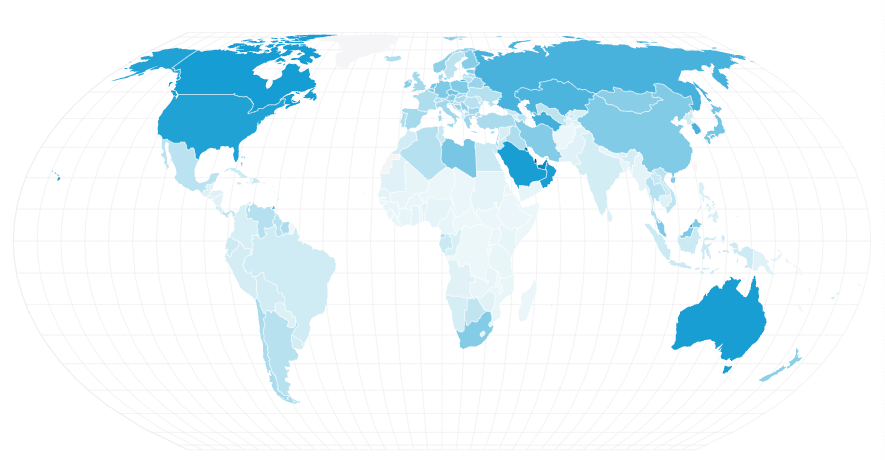Mastering Interactive Maps with React: Integrating Leaflet with React
Table of Content
Creating interactive maps in your React applications can significantly enhance user experience.
Leaflet is a powerful JavaScript library for embedding maps, and when combined with React, it offers a robust solution for displaying geographic data.
This tutorial will guide you through integrating Leaflet with React, focusing on adding markers and displaying GeoJSON data.

Prerequisites
- Basic understanding of React.
- Node.js installed on your machine.
Setting Up Your React Project
First, create a new React application if you haven’t done so already:
npx create-react-app leaflet-react
cd leaflet-react
Next, install the necessary packages:
npm install leaflet react-leaflet
Also, include Leaflet's CSS in your index.css or App.css file:
@import url('https://unpkg.com/leaflet/dist/leaflet.css');
Creating a Basic Map Component
Create a new component named MapComponent.js:
// src/MapComponent.js
import React from 'react';
import { MapContainer, TileLayer } from 'react-leaflet';
import 'leaflet/dist/leaflet.css';
const MapComponent = () => {
const position = [51.505, -0.09]; // Initial position [latitude, longitude]
return (
<MapContainer center={position} zoom={13} style={{ height: '500px', width: '100%' }}>
<TileLayer
url="https://{s}.tile.openstreetmap.org/{z}/{x}/{y}.png"
attribution='© <a href="https://www.openstreetmap.org/copyright">OpenStreetMap</a> contributors'
/>
</MapContainer>
);
};
export default MapComponent;
Then, use this component in your App.js:
// src/App.js
import React from 'react';
import MapComponent from './MapComponent';
function App() {
return (
<div className="App">
<h1>Interactive Map with Leaflet and React</h1>
<MapComponent />
</div>
);
}
export default App;
Adding Markers
Now, let's add markers to the map. Update MapComponent.js to include markers:
import React from 'react';
import { MapContainer, TileLayer, Marker, Popup } from 'react-leaflet';
import 'leaflet/dist/leaflet.css';
import L from 'leaflet';
// Ensure markers display correctly
delete L.Icon.Default.prototype._getIconUrl;
L.Icon.Default.mergeOptions({
iconRetinaUrl: 'https://unpkg.com/leaflet/dist/images/marker-icon-2x.png',
iconUrl: 'https://unpkg.com/leaflet/dist/images/marker-icon.png',
shadowUrl: 'https://unpkg.com/leaflet/dist/images/marker-shadow.png',
});
const MapComponent = () => {
const position = [51.505, -0.09];
const markers = [
{ position: [51.505, -0.09], title: "Marker 1" },
{ position: [51.51, -0.1], title: "Marker 2" },
];
return (
<MapContainer center={position} zoom={13} style={{ height: '500px', width: '100%' }}>
<TileLayer
url="https://{s}.tile.openstreetmap.org/{z}/{x}/{y}.png"
attribution='© <a href="https://www.openstreetmap.org/copyright">OpenStreetMap</a> contributors'
/>
{markers.map((marker, index) => (
<Marker key={index} position={marker.position}>
<Popup>{marker.title}</Popup>
</Marker>
))}
</MapContainer>
);
};
export default MapComponent;
Displaying GeoJSON Data
You can visualize GeoJSON data directly on your Leaflet map. Create a sample GeoJSON object in the MapComponent.js:
import React from 'react';
import { MapContainer, TileLayer, Marker, Popup, GeoJSON } from 'react-leaflet';
import 'leaflet/dist/leaflet.css';
import L from 'leaflet';
delete L.Icon.Default.prototype._getIconUrl;
L.Icon.Default.mergeOptions({
iconRetinaUrl: 'https://unpkg.com/leaflet/dist/images/marker-icon-2x.png',
iconUrl: 'https://unpkg.com/leaflet/dist/images/marker-icon.png',
shadowUrl: 'https://unpkg.com/leaflet/dist/images/marker-shadow.png',
});
const geoJsonData = {
type: "FeatureCollection",
features: [
{
type: "Feature",
properties: { name: "My Area" },
geometry: {
type: "Polygon",
coordinates: [
[
[-0.1, 51.51],
[-0.09, 51.52],
[-0.08, 51.51],
[-0.1, 51.51]
]
]
}
}
]
};
const MapComponent = () => {
const position = [51.505, -0.09];
const markers = [
{ position: [51.505, -0.09], title: "Marker 1" },
{ position: [51.51, -0.1], title: "Marker 2" },
];
return (
<MapContainer center={position} zoom={13} style={{ height: '500px', width: '100%' }}>
<TileLayer
url="https://{s}.tile.openstreetmap.org/{z}/{x}/{y}.png"
attribution='© <a href="https://www.openstreetmap.org/copyright">OpenStreetMap</a> contributors'
/>
{markers.map((marker, index) => (
<Marker key={index} position={marker.position}>
<Popup>{marker.title}</Popup>
</Marker>
))}
<GeoJSON data={geoJsonData} style={{ color: 'blue', weight: 2 }} />
</MapContainer>
);
};
export default MapComponent;
Conclusion
Integrating Leaflet with React allows you to build interactive maps effortlessly. With markers and GeoJSON capabilities, your application can display dynamic geographical information. Experiment with different datasets to create engaging map visualizations that will impress your users!
Now, you have a solid foundation to explore further. Happy mapping!











